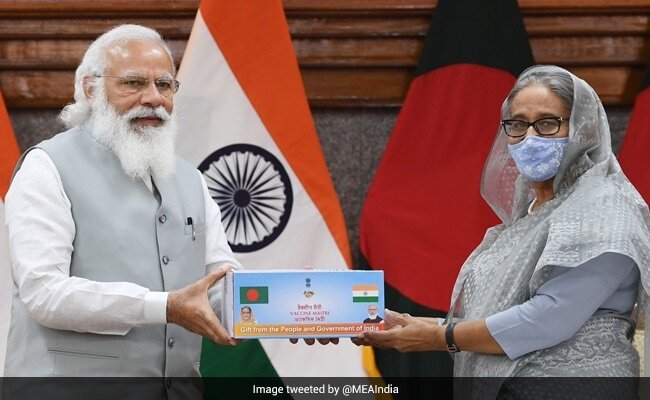Buffer states
A buffer state is an interesting concept in international relations and geopolitics. A buffer state is a country situated between two or more larger powers, often serving to prevent conflict between them. By existing in a strategic location, a buffer state can create a kind of “cushion” that separates rival powers and reduces the likelihood of direct confrontation. Here’s a bit more detail on the characteristics and functions of a buffer state:
- Separation of Powers: Buffer states can help to maintain peace by separating powerful countries that might otherwise come into conflict. Their geographic location makes them a natural barrier.
- Neutrality: Often, buffer states maintain a policy of neutrality or non-alignment. They might avoid taking sides in disputes between neighbouring powers to maintain stability and their own sovereignty.
- Diplomatic Challenges: Being a buffer state can be a double-edged sword. While they may benefit from their strategic position, they may also face intense pressure from neighbouring powers. The larger powers may seek to influence the buffer state’s policies, creating a challenging diplomatic landscape.
- Historical Examples: There have been many examples of buffer states throughout history, such as Belgium between France and Germany, Mongolia between Russia and China, or Afghanistan between the Russian and British Empires.
- Changing Roles: The role of a buffer state can change over time based on the geopolitical environment. Political shifts, changes in alliances, and even alterations to physical borders can affect a state’s status as a buffer.
- Economic and Cultural Influences: Sometimes, buffer states can act as cultural or economic bridges between different regions, absorbing and blending different influences. This may enrich the country culturally but can also lead to internal tensions.
- Potential Vulnerabilities: Buffer states may sometimes find themselves in vulnerable positions, especially if they are weaker than the neighbouring powers. Their strategic importance might lead to external interference or even invasion.
Let’s explore some examples of buffer states:
- Afghanistan: Historically, Afghanistan has acted as a buffer state between the Russian Empire (later the Soviet Union) and the British Empire in India. This was particularly the case during the Great Game in the 19th century when both powers sought to control Central Asia.
- Mongolia: In the 20th century, Mongolia acted as a buffer between the Soviet Union and China. Both these powers had differing ideologies and interests, and Mongolia found itself in a strategic position between them.
- Thailand: During the colonial period, Thailand served as a buffer state between British-controlled Burma (now Myanmar) and French-controlled Indochina. The British and the French both had significant colonial interests in Southeast Asia, and Thailand’s neutrality helped maintain a balance between them.
- Belgium: In the 19th century, Belgium was created as a neutral state that served as a buffer between France and Germany, two of Europe’s great powers. This neutrality was a significant element in the European balance of power until World War I.
- Nepal: Situated between India and China, two significant Asian powers, Nepal has often been considered a buffer state. Its strategic position has required delicate diplomacy, balancing its relations with both neighbours.
- Bhutan: Similar to Nepal, Bhutan is another example in South Asia. Positioned between India and China, it has navigated its diplomatic relations carefully to maintain its sovereignty.
- Luxembourg: Created after the Congress of Vienna in 1815, Luxembourg was seen as a buffer state between France and Germany’s various states. Its neutrality was intended to help maintain peace in Western Europe.
- Finland: During the Cold War, Finland acted as a buffer between NATO and the Soviet Union. Its policy of neutrality allowed it to maintain good relations with both sides.
- Laos and Cambodia: During the Cold War, both Laos and Cambodia acted as buffer states between Communist North Vietnam and the Western-aligned countries of South Vietnam and Thailand.
- Jordan: Sometimes considered a buffer state between Israel and the Arab countries in the Middle East, Jordan’s strategic position has often required it to balance competing interests in the region.
- Korea: Historically, Korea acted as a buffer between China and Japan. Its geographical location meant that control over the Korean Peninsula was often a strategic objective for both powers.
- Poland: During various periods, Poland has acted as a buffer between Germany and Russia. This was especially prominent in the interwar period and during the Cold War.
- Ukraine: In the post-Cold War era, Ukraine has been seen as a buffer between Russia and the European Union/NATO. The ongoing tensions and conflicts within Ukraine highlight the complexities of this buffer role.
- Estonia, Latvia, and Lithuania: These Baltic states have historically acted as a buffer region between Germany and Russia. During the Cold War, they were part of the Soviet sphere but have since aligned with NATO and the EU.
- Switzerland: Known for its policy of neutrality, Switzerland has long served as a buffer between major European powers, such as France and Germany.
- Malaysia: During the Cold War, Malaysia served as a buffer between the communist countries of Southeast Asia and the non-communist countries to the south, such as Indonesia and Singapore.
- Austria: After World War II, Austria declared itself permanently neutral, acting as a buffer between NATO and the Warsaw Pact during the Cold War.
- Cyprus: Cyprus has acted as a buffer between Greece and Turkey, two NATO allies with significant historical tensions. The presence of a UN buffer zone on the island symbolises this role.
- Tibet: Historically, Tibet was considered a buffer region between India and China, though this changed after China’s assertion of control over the area in the mid-20th century.
- Sikkim: Before becoming an Indian state in 1975, Sikkim acted as a buffer between India and China.
- Djibouti: Located strategically near the entrance to the Red Sea, Djibouti acts as a buffer between the conflicting interests of various regional powers, including Eritrea, Ethiopia, and Somalia.
- Andorra: Nestled between France and Spain, Andorra has historically acted as a buffer, balancing its relationships with both nations.
- Lebanon: Lebanon’s complex political landscape has often seen it acting as a buffer between different Middle Eastern powers, as well as between different religious and ethnic groups within the region.
- Botswana: During the apartheid era, Botswana acted as a buffer between South Africa and the frontline states that opposed apartheid.
These examples are indicative of the multifaceted nature of buffer states and how they can emerge in different contexts. It’s essential to understand that the concept of a buffer state can be fluid and vary across different historical and geopolitical situations. Some of the examples mentioned might be considered more classic or clear-cut instances, while others could be debated.
![]()

